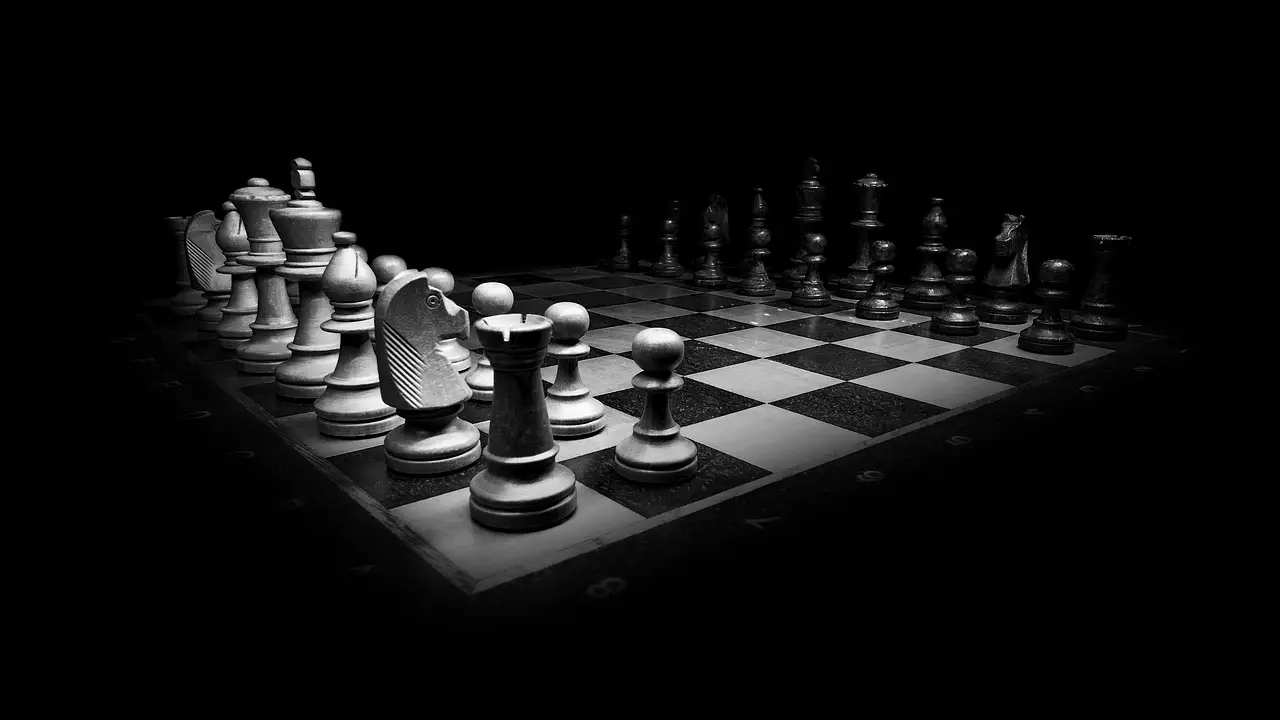How many points is a knight worth?
Contents
- 1 How many points is a knight worth?
- 2 Understanding Piece Values in Chess
- 3 Analyzing the Knight’s Characteristics
- 4 Historical Perspectives on Knight Valuation
- 5 Theoretical Approaches to Assessing Knight Value
- 6 Practical Considerations in Assessing Knight Value
- 7 Contemporary Perspectives and Debates
- 8 Conclusion
Chess, often dubbed the “game of kings,” is a captivating pursuit that transcends mere entertainment—it’s a battleground where intellect and strategy collide. Central to this timeless contest are the pieces that adorn the checkered board, each with its own unique attributes and tactical significance.
Among these, the knight emerges as a captivating enigma, renowned for its unconventional movement and multifaceted role in shaping the outcome of the game. But just how many points is a knight worth? Let’s embark on a journey through the labyrinthine depths of chess theory to unravel the mysteries surrounding the value of this esteemed piece.

Understanding Piece Values in Chess
In the intricate tapestry of chess, each piece holds a distinct value—a numerical reflection of its strategic importance on the battlefield. At the forefront of this valuation system are pawns, the humble foot soldiers tasked with initiating the skirmish. Moving forward, we encounter bishops and knights, each typically assigned a value of three points, symbolizing their comparable strength and versatility.
The rooks, towering sentinels of the board, wield considerable power at five points apiece, while the queen, the game’s most formidable piece, reigns supreme at a staggering nine points. However, these numerical assignments merely scratch the surface of the complex interplay between pieces, positions, and strategic objectives that defines the essence of chess.
Analyzing the Knight’s Characteristics
Amidst the symphony of movement and calculation that defines a game of chess, the knight stands as a beacon of versatility and ingenuity. With its distinctive L-shaped leap, the knight possesses a rare ability to traverse the battlefield with finesse, circumventing obstacles and piercing through enemy lines with ease. Consider, for instance, the following scenario:
In this position, White’s knight on f5 exerts formidable pressure on Black’s position, threatening both the rook on e7 and the pawn on g7. This exemplifies the knight’s unique capacity to infiltrate deep into enemy territory, posing thorny tactical dilemmas for the opponent.
Moreover, the knight’s prowess extends beyond mere movement; its ability to control critical squares and execute intricate maneuvers makes it a formidable force on the board. Take, for instance, the concept of a “knight outpost,” where a knight establishes a dominant position on an advanced square, often supported by allied pawns. This concept is vividly illustrated in the following diagram:
In this position, White’s knight on d5 serves as an impregnable outpost, exerting significant influence over the central squares and limiting Black’s mobility. Such strategic considerations underscore the knight’s pivotal role in shaping the ebb and flow of the game.

Historical Perspectives on Knight Valuation
Throughout the annals of chess history, luminaries and scholars have engaged in spirited debates regarding the knight’s intrinsic value on the board. From the timeless wisdom of ancient treatises to the groundbreaking analyses of modern masters, the discourse surrounding the knight’s worth has evolved alongside the game itself.
For instance, the legendary World Champion, Mikhail Tal, renowned for his daring and imaginative play, often showcased the dynamic potential of the knight in his games. In the following iconic example from Tal’s oeuvre, we witness the knight’s ability to unleash havoc amidst the chaos of battle:
In this electrifying position, Tal, playing as White, orchestrates a breathtaking knight maneuver, sacrificing material in exchange for a devastating attack against Black’s king. This illustrative example highlights the knight’s capacity for tactical fireworks and underscores its status as a potent weapon in the hands of a skilled tactician.
Theoretical Approaches to Assessing Knight Value
In the quest to unravel the mysteries of the knight’s worth, chess theorists have adopted various methodologies, ranging from comparative analyses of piece mobility to comprehensive evaluations of positional dynamics. Indeed, the knight’s value is a fluid concept, fluctuating throughout the course of a game in response to shifting positional factors and strategic imperatives. Consider, for instance, the following diagram:
In this position, White’s knight on c6 enjoys unparalleled mobility, controlling key squares and exerting pressure on Black’s position. Such examples underscore the dynamic nature of the knight’s value, which is intricately intertwined with the ever-changing landscape of the board.
Practical Considerations in Assessing Knight Value
Practical considerations in assessing the value of a knight in chess are essential for understanding its true worth on the board. Here are some key points to consider:
- Piece Coordination: The knight’s effectiveness often depends on its coordination with other pieces. For example, a knight may work synergistically with bishops or rooks to control key squares or launch coordinated attacks against the opponent’s position.
- Pawn Structure: The pawn structure can significantly influence the value of a knight. Knights often thrive in positions with pawn structures that create outpost squares—advanced squares that are difficult for the opponent to challenge with pawns.
- Mobility: Assessing the knight’s mobility is crucial in determining its value. A knight with limited mobility due to blocked or restricted squares may be less valuable than one with greater freedom to maneuver.
- Tactical Opportunities: Knights are renowned for their tactical prowess, particularly in executing fork tactics—simultaneously attacking two enemy pieces. Evaluating potential tactical opportunities involving the knight can reveal its true value in a given position.
- Endgame Considerations: In the endgame, knights can be particularly potent pieces due to their ability to jump over other pieces. Understanding how to leverage a knight’s strengths in endgame scenarios, such as creating passed pawns or supporting mating threats, is essential for assessing its value accurately.
- Opponent’s Weaknesses: Exploiting the opponent’s weaknesses is a fundamental aspect of chess strategy. Assessing how well a knight can target and exploit the opponent’s weaknesses, such as weak squares or vulnerable pieces, is crucial for evaluating its value in practical play.
By considering these practical aspects, players can gain a deeper understanding of the value of a knight in chess and make informed decisions to maximize its effectiveness on the board.

Contemporary Perspectives and Debates
In the modern era of chess, the debate regarding the knight’s precise value continues to captivate the minds of enthusiasts and experts alike. While some herald it as an indispensable asset in their tactical arsenal, others question its efficacy in light of evolving strategic paradigms. Nevertheless, one thing remains certain: the knight’s enigmatic allure and strategic versatility continue to fascinate players of all levels, serving as a testament to the enduring richness and complexity of the game.
Conclusion
In conclusion, the question of how many points a knight is worth transcends mere numerical valuation—it embodies the essence of chess itself, a dynamic interplay of strategy, creativity, and foresight. As players embark on their chess odyssey, the knight stands as a symbol of ingenuity and adaptability, challenging them to unlock its full potential on the battlefield. So, the next time you ponder the value of a knight, remember that its worth extends far beyond the confines of a point system—it’s an integral piece of the intricate tapestry that is chess.





